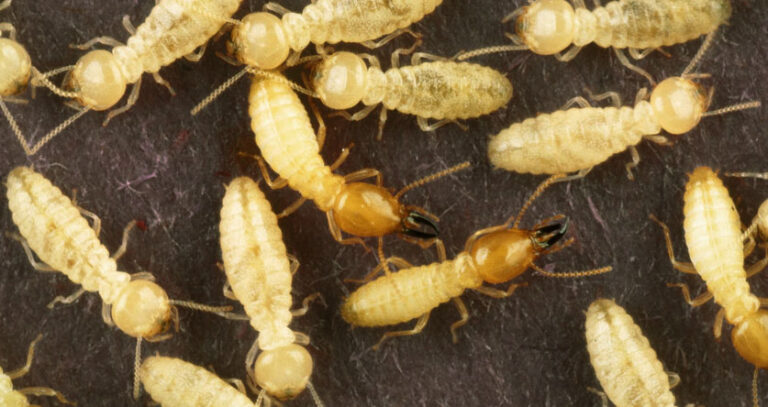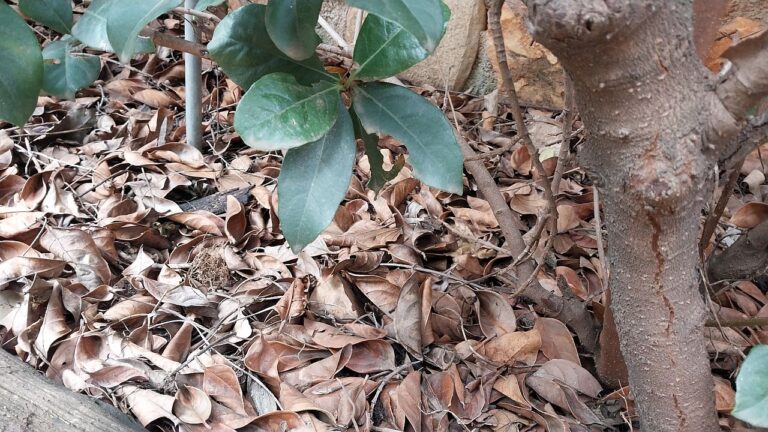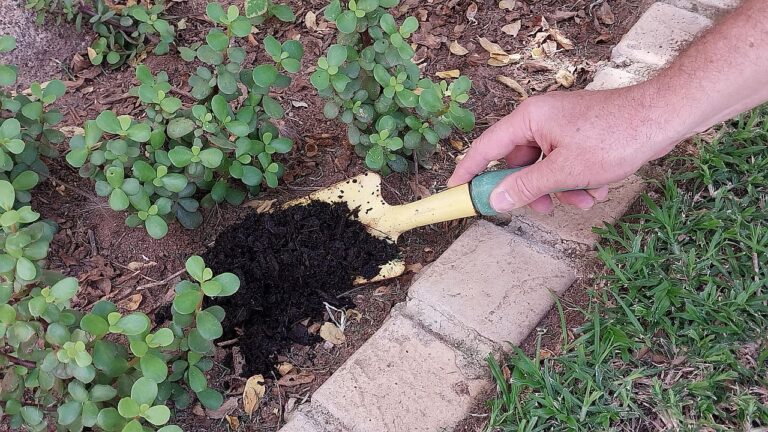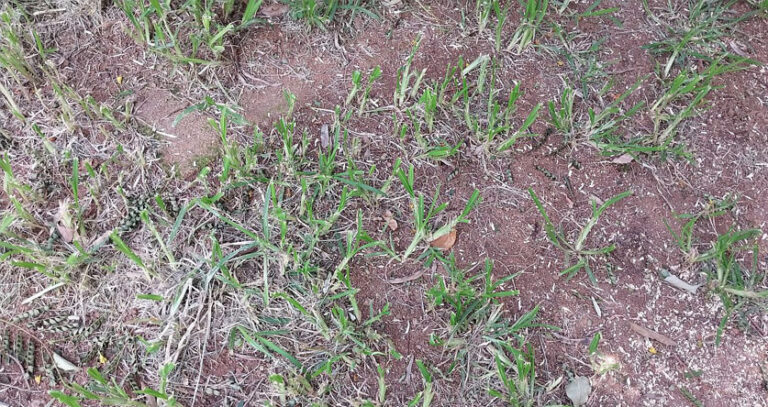How To Break Down Clay Soil Fast (Amazing Results!)
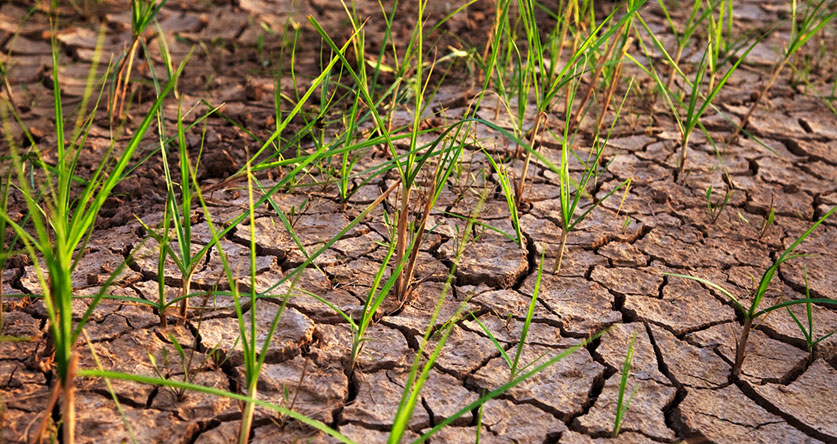
Struggling with clay soil?
Well, you’re in luck! – Or maybe not if your garden beds are full of clay. :-/
Below, I’ll explain some of the best tips for quickly breaking up clay-like soil to improve its structure and fertility.
And lessen your gardening woes!
How To Identify Clay Soil?
You probably know, the ideal type of soil is “loam”. This is a perfectly balanced mix of clay, sand, and silt, and combines all the positive qualities of each soil type.
It’s also pretty tricky to achieve!
Clay soil has a high proportion of very small and compact clay particles. This soil lacks aeration and drains poorly. The compact nature of clay can make it difficult for plants to grow (But on a positive note, clay ground is known to hold on to nutrients well).

A good starting point is to figure out what type of soil you have in your garden…
Using a mason jar, you can quickly identify what type of soil you’re dealing with! Follow these simple steps:
- Go to where you’d like to plant and dig a few soil samples. Go at least 9 inches deep because that’s where the roots of your plants will live.
- Mix the sampled soil thoroughly and fill your jar half-full.
- Fill the remaining half of the jar with water, close it, and give it a good shake so that all the particles are afloat.
Leave the mixture to settle…
The heaviest particles from the sand (particle size of 0.05 – 2 mm) will land first, followed by your silt (0.05 – 0.02 mm) and then your clay (less than 0.02 mm). When they settle entirely, and there’s no more water in the jar, the bottom layer will be sand, the middle silt, and the top will be clay.
Pretty neat, huh?
Use a marker to indicate where each layer starts so you can better understand how much of each you have in your soil.
The ideal soil blend you want is a loam mix consisting of roughly 25% clay, 25 – 50% silt, and 25 – 50% sand. So, for example, if your soil sample has 50% clay, 25% is silt, and the remaining 25% is sand, you know you have too much clay in your soil.
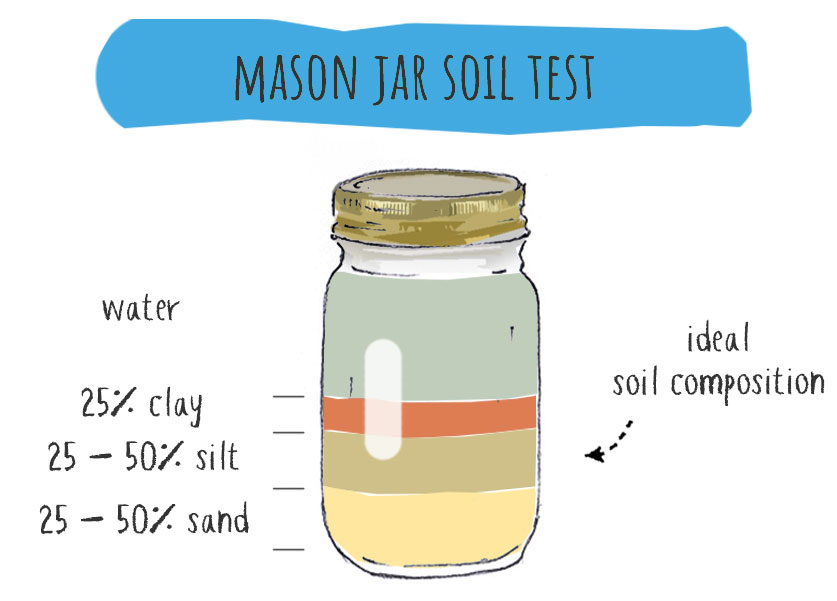
Best Ways to Break Down Clay Soil
You can break down clay soil fast with a rototiller, gypsum, compost, manure, mulch, and plants. A rototiller is the fastest because it can dig deep, mix organic matter, and leave a smooth surface ready for seedlings. Plant roots also break up clay soil and leave more space for other plants to grow.
Multiple tools and techniques exist that fit every gardener’s arsenal. Let’s look closer at the ones that can bring victory over clay soil!
1. A Rototiller Is Reliable For Breaking Up Clay Soil
A rototiller is a magical device that offers a lot of versatility by combining many gardening tools into a single machine. Some of its superb benefits are:
- It digs deep into the ground to loosen it entirely and create air spaces, allowing more water and nutrients. It can also prevent waterlogging and improve root growth.
- It does a great job of mixing organic matter like compost, leaves, and manure. In turn, the soil is more nutrient-rich and fertile.
- The rototiller leaves a smooth and level surface that makes it much easier to transplant or sow seedlings.
Using a rototiller is a rapid first approach when starting out. But I don’t recommend doing this every year. It significantly disturbs the soil’s microbiome, reducing fertility! Once you get control of the clay in your yard, try some of the more natural methods outlined below.
2. Use A Garden Fork Meant For Digging
The reason you do this is to aerate the soil. Adding air pockets to clay soil breaks down the particles and provides space for natural microbes to move in, improving soil life.
There are a few garden fork variations, but I recommend a heavy duty broad fork or pitch fork like this to effectively breaks up clay soil (Amazon). It has four to six sturdy straight tines that make quick work of dense clay. The tines do most of the work, so always get a steel one with a comfortable handle and the ideal length so you don’t hurt your back.
Another useful tool for maintaining clay soil is a core aerator. This handy tool has hollow tines to remove “cores” from the soil and helps reduce compaction.
Soil naturally compacts over time, so ideally you should aerate with a garden fork twice a year. For example in the spring before the growing season, and in the fall, in preparation for the following year.
3. Animal Manure And Compost
Manure and compost are ideal if you have abnormal amounts of clay. Organic content like composted grass leaves and animal manure vastly improves soil’s aeration and workability.
As a bonus, it also enhances the soil’s ability to retain moisture and nutrients, and vastly improves soil health with natural microbes!
As you’ve probably guessed, I’m a big fan of composting 🙂 Digging compost into garden beds takes some work but quickly transforms the soil texture!
If you need help deciding which compost to use, take a look at my article “best compost for clay soil.”
Different types composting you can consider for breaking up clay soil include:
- Garden compost: Introduces organic matter and beneficial microorganisms that improve soil structure and aeration.
- Leaf mold: Incorporating leaf mold enhances clay soil by increasing its drainage capabilities and overall friability.
- Trench composting: This method directly amends the soil as organic materials decompose in place, contributing an improved texture.
- Composted manure: fosters soil “aggregation”, allowing clay particles to separate and enhancing drainage while providing nutrients.
4. Use Plants That Break Up Clay Soil
Some plants are suitable for breaking up clay soil because they have roots that can grow deep and wide, creating spaces and channels in the ground. These spaces allow more air and water to enter the soil, making it easier for other plants to grow.
Certain plants also add organic matter to the soil as their roots decay, which helps to improve the soil structure and fertility. Clay soil with drainage problems needs plants that can tolerate or even enjoy wet conditions. Among the best options for combating clay soil are:
- Butterfly Bush
- Bee Balm
- Cardinal Flower
- Black-eyed Susan
- Swamp Milkweed
These flowers can cope with moist and heavy soil (and attract pollinators to your garden). There are many other great plants for clay soil with poor drainage; check them out.
Keep in mind that this is a slow-acting solution. But using plants for long-term maintenance is something I add to my gardening routine 🙂
5. Using Mulch For Clay Soil (Best Types)
Bark mulch can help improve clay soil’s structure, drainage, and moisture retention and prevent cracking and weed growth. However, bark mulch has some drawbacks, such as robbing nitrogen from the soil, decomposing slowly, and being more expensive than other mulches.
I suggest sprinkling a nitrogen-rich fertilizer before you start your mulching process. Some of the options you might consider are:
- Urea – cheap and easy to find. It’s a fast-acting fertilizer that dissolves quickly in water and releases nitrogen as ammonium and nitrate.
- Blood meal – This by-product originates from the meat industry. It’s made from dried animal blood, and it’s a fast-acting fertilizer that quickly boosts plants’ nitrogen.
- Pelleted chicken manure – more expensive than regular manure but contains higher nitrogen content than fresh or composted chicken manure.
Mulch will not immediately solve your clay problems, but it can be part of a longer strategy.
6. Gypsum Can Break Up Clay Soil
Clay soil becomes hard because its tiny particles have a negative charge that bonds closely with water molecules. You can reverse this effect by adding gypsum, (a compound of calcium and sulfate). When it dissolves in water, it releases calcium ions with a positive charge.
When the negative particles from the clay interact with the positive particles from the gypsum, they create more space between the particles and improve drainage. This allows for more air and water to circulate. Gypsum also neutralizes some of the acidity in the clay, allowing more nutrients to the plants.
Remember that gypsum can take a few months to work and is not a permanent solution for clay soil! For long term results use regular composting, cover plants, and mulching.
FAQ
Do You Have To Break Up Clay Soil By Tilling?
Tilling is not the only option for loosening clay soil. A few other ideas include using earthworms, sawdust, manure, or vinegar to loosen up the clay particles!
They accomplish the end goal differently; worms and sawdust aerate the soil, while manure, vinegar, and gypsum work to loosen the particles and make it easier to dig up.
Does Vinegar Break Down Clay Soil?
Yes, adding an acidic element can help dissolve and break up the clay particles in the soil.
Will Coffee Grounds Break Up Clay Soil?
Coffee grounds may have the opposite effect, making the soil more compact and water-resistant. This is because coffee grounds are very fine particles that can clump together and form barriers of water that stop water from entering the soil.
Do Earthworms Break Up Clay Soil?
Yes, earthworms can help to aerate and fertilize the clay soil by creating tunnels, and they improve the nutrients in the ground with their castings.
There’s more than one way to tackle clay soil and make quick work of it! Use a digging fork, compost, or plan longer-term solutions like plants and mulch to help you manage your garden.
Ideally, I suggest you try combining these methods to maximize your chances of stabilizing your soil.




